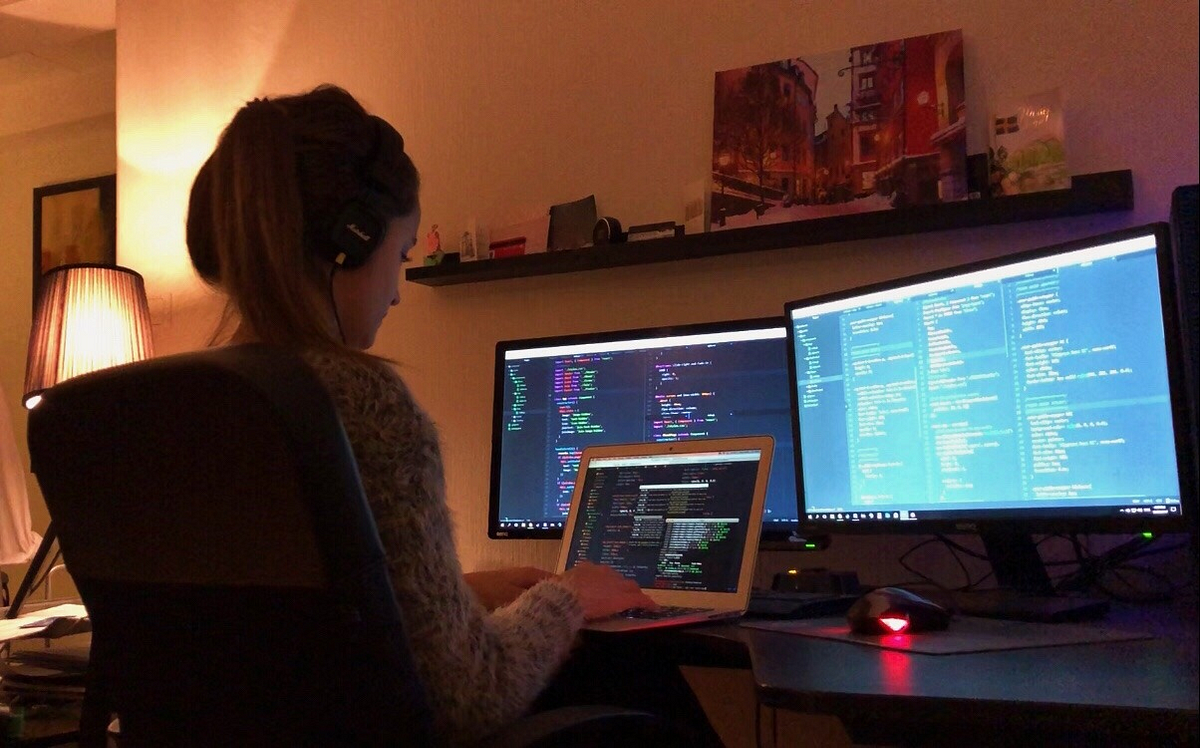Building Success with a Dedicated Development Team for Your Organization Requirements
Wiki Article
Devoted Developers vs. In-House Teams: Which Is Right for You?
The decision in between using devoted developers and preserving an in-house group is a considerable one that can influence the trajectory of your jobs and overall company method. Committed designers supply a degree of versatility and customized proficiency that can be beneficial for certain, temporary initiatives. Alternatively, in-house groups contribute to a natural company culture and a nuanced understanding of lasting objectives. By examining vital factors such as budget plan, job range, and desired control, you can much better determine which technique aligns with your organizational demands. Nevertheless, the effects of this option expand beyond prompt end results-- take into consideration the broader effect on your service landscape.Comprehending Devoted Designers
The expanding demand for specialized abilities in the technology market has actually led to the introduction of committed developers as a sensible remedy for numerous companies. These professionals are usually gotten on a task basis, allowing companies to leverage details expertise without the lasting commitment connected with full time hires. Dedicated programmers are often ingrained within a customer's group, giving adaptability and scalability to satisfy task requirements.This model enables companies to access a global skill swimming pool, which is specifically helpful in a rapidly evolving technical landscape. Committed developers can be sourced from numerous geographical places, guaranteeing that firms can discover the right capability at competitive prices. They typically bring a wide range of experience and expertise, having actually worked on varied tasks across various industries.
In addition, specialized developers can focus solely on the tasks handy, enhancing productivity and efficiency. They are furnished to incorporate perfectly right into existing operations, teaming up carefully with in-house groups to attain project goals. This strategy not only reduces the worry of employment and training however also enables companies to remain dexterous, adapting rapidly to changing market demands and technical advancements.
Benefits of In-House Teams

Additionally, internal groups have a tendency to have a deeper understanding of the firm's goal, values, and objectives. This placement can boost worker engagement and motivation, as staff member really feel more attached to their job and the organization's success. Additionally, having a devoted internal team enables much better placement of objectives and approaches, as these participants are consistently concentrated on the company's top priorities.
In-house teams additionally help with quicker decision-making procedures, as they can react extra swiftly to adjustments and difficulties. The established relationships and familiarity with business procedures enable for streamlined workflows and decreased miscommunication. Ultimately, the mix of a cohesive culture, positioning with business objectives, and effective interaction makes internal teams a useful possession for lots of companies, especially those looking to cultivate long-lasting growth and innovation.
Price Factors To Consider
When reviewing cost considerations, both in-house groups and devoted developers present distinct financial implications for companies. Engaging committed programmers normally involves a pay-per-project or hourly price design, which can be cost-effective for services with varying project demands. This approach enables adaptability in scaling resources up or down, making sure that firms just pay for the services they need.In comparison, internal teams involve fixed costs, including salaries, benefits, and overhead expenses such as office area and equipment. While this model supplies higher control and prompt accessibility of resources, it might cause greater lasting expenses, especially if the workload does not warrant a full time team.
Furthermore, companies must take into consideration the hidden costs connected with employment and training of in-house employees, which can better strain spending plans. In some situations, the time and sources invested on managing an in-house team can detract from the company's core service goals.

Task Management and Flexibility
Project monitoring and adaptability are important aspects that influence the option between in-house groups and committed developers. Dedicated designers usually offer a high level of adaptability, permitting companies to scale resources up or down based on job demands. This dexterity can be particularly useful for organizations experiencing changing workloads or those seeking to introduce rapidly. Committed teams often have actually developed processes for taking care of jobs effectively, leveraging details techniques like Agile or Scrum, which facilitate iterative progress and versatility.
Inevitably, the choice in between committed designers and in-house groups hinges on the preferred level of versatility and the certain job administration demands. Companies need to review their functional characteristics, task complexity, and resource accessibility to figure out which alternative aligns best with their strategic purposes.
Making the Right Selection
Choosing the appropriate advancement approach-- in-house teams or dedicated developers-- calls for a careful analysis see this page of various factors that line up with a company's strategic goals. Conversely, internal groups can give much better connection and combination with existing personnel.Following, review your spending plan. Devoted designers typically present an affordable option for temporary jobs, while in-house groups may incur higher lasting expenditures due to incomes, advantages, and overhead expenses. Evaluate the level of control and partnership preferred; internal teams usually promote more powerful interaction and placement with company culture.
If immediate results are required, specialized developers can be onboarded swiftly, whereas developing an in-house group takes time for recruitment and training. If constant growth is crucial, investing in an internal group might generate much better returns over time.
Final Thought
To conclude, the choice in between dedicated designers and in-house teams depends upon job requirements and organizational purposes. Committed designers provide adaptability and specialized competence, making them ideal for short-term initiatives. Conversely, internal teams grow a cohesive society and deeper positioning with long-lasting objectives. Cautious analysis of budget plan restrictions, task timelines, and wanted control levels is vital for establishing one of the most appropriate approach, making certain placement with critical concerns and operational effectiveness.The decision between making use of committed designers and maintaining an in-house group is a significant one that can affect the trajectory of your projects and general organization technique.Task management and versatility are crucial elements that affect the choice in between in-house teams and devoted programmers. dedicated development team.In contrast, in-house groups might stand out in maintaining a consistent project monitoring structure due to their experience with the organization's society and lasting goals. Dedicated programmers often look at this web-site offer an economical from this source remedy for temporary tasks, while in-house groups might sustain greater lasting costs due to incomes, benefits, and overhead prices.In conclusion, the choice between in-house teams and committed developers hinges on job requirements and organizational goals
Report this wiki page